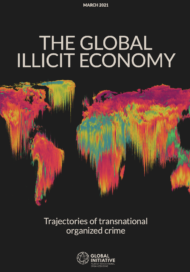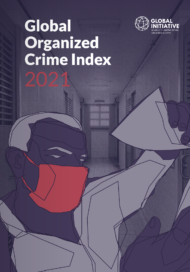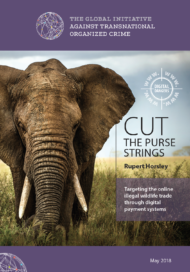Posted on 03 Dec 2021
China’s Belt and Road Initiative (BRI) includes as one of its components an active push to promote its culture abroad, including traditional Chinese medicine (TCM). But some TCM products and formulas are found to contain parts from endangered species of wildlife and plants. As such, and in the absence of safeguards, reports of BRI countries striving to contribute to supply chains of the traditional Chinese medicine industry are deeply concerning.
Launched in 2013 by Chinese President Xi Jinping, the BRI aims to achieve five objectives: policy coordination among states along the BRI; improved connectivity; unimpeded trade; financial integration; and people-to-people affinity, a concept defined as the facilitation of ‘civilizational exchanges’. While many observers have focused on large-scale infrastructure and trade projects along the BRI, such as the China–Pakistan Economic Corridor, less attention has been given to the ‘people-to-people affinity’ objective.
In this context, civilizational exchange usually refers to the role of non-state organizations as vectors of soft power along the BRI. In addition to ‘hard’ state-to-state diplomacy, China has made great efforts to use the BRI to strengthen its ‘soft’ power through initiatives such as educational scholarships, vaccine diplomacy, Confucius Institutes (Chinese educational and culture promotion programmes) and others. Although accounts differ in terms of how successful Beijing’s soft diplomacy drive has been, concerns have been raised regarding the negative impact of potentially unregulated exchanges between countries that have a poor track record in combating organized crime.
One prime example is the promotion of traditional Chinese medicine, which Beijing actively champions abroad, and which raises several red flags given the impact of the wildlife trade on species conservation and organized crime. A number of these ‘medicinal’ products contain endangered plants and animal parts as ingredients, and demand has put huge pressure on severely endangered wild animals, such as rhino and tigers.
There are three risks attached to the promotion of traditional Chinese medicine along the BRI corridors. First, the expansion of the customer base abroad, which, without sustainable ways of sourcing ingredients, will lead to more illegal trafficking of animals; second, rise in the number of captive breeding facilities to supply markets inside and outside of China, through which laundering may happen; and, third, the possibility that the BRI infrastructure component will give criminal networks better access to biodiverse regions and facilitate illegal trade.
Preventing or mitigating the first two risks requires implementing strict safeguards and efficient monitoring systems in supply chains. Although the first COVID-19 outbreak detected in Wuhan’s wet market contributed to an increased understanding of the risks related to wildlife trade and consumption in China, there are still many loopholes in China’s domestic anti-trafficking laws and regulations.
Pangolins, thought to be the world’s most trafficked animal, are a case in point. Although all eight species of Asian and African pangolins are listed in appendix I of the Convention on International Trade in Endangered Species of Wild Fauna and Flora, making their trade across borders illegal, Chinese law still allows domestic trade of pangolin scales for use in traditional Chinese medicine. This has been exploited by criminal networks to smuggle pangolins and their parts into China. Seizure data suggests that large-quantity shipments of pangolin scales between 2010 and 2015 were mainly destined for China, closely followed by the US. An ongoing study by the Global Initiative Against Transnational Organized Crime on pangolin-based traditional Chinese medicine sold online in a number of countries suggests that there is only weak enforcement of laws protecting value chains from the illegal trade at the distribution and retail level – the last point at which these crimes should be detected.
This pattern of inadequate monitoring and enforcement may be multiplied in the framework of the BRI owing to increased integration of transnational traditional Chinese medicine supply chains. Reports of wildlife breeding centres in Nepal being courted by Chinese investors are a significant cause for concern, as such breeding centres in other countries have been found to contribute to the illicit wildlife trade by laundering illicit imports of pangolin specimens from Africa and South East Asia. Where breeding centres are established in countries with high levels of corruption it will only make the monitoring and implementation of safeguards more difficult, and law enforcement more complex, in a region where limited law enforcement capacity is already a contributing factor to growth in organized crime.
Researchers have laid out a roadmap allowing the diffusion of traditional Chinese medicine products and practices along the BRI without aggravating critical conservation challenges. The promotion of traditional Chinese medicine abroad is still in its early stages, so there is room left to develop sustainable alternatives in the supply chain along the BRI. Climate and environmental diversity among countries along the BRI, for instance, creates opportunities for sustainable farming, breeding or wild harvesting of raw materials used in these supply chains. For those species that cannot be bred or cultivated, closer and better-regulated integration of transnational traditional Chinese medicine products in supply chains also broadens the scope for sustainable alternatives.
However, these approaches require in-depth knowledge of the environmental threats posed by unsustainable traditional Chinese medicine supply chains, transnational cooperation in the implementation of sustainable strategies and, most importantly, impartial third-party monitoring by competent organizations. However, efficient monitoring relies on a high degree of transparency along the entire supply chain, and lack of transparency has so far been the major flaw of many BRI projects.
Click here to access the GI-TOC digital tool mapping the Belt and Road Initiative and illicit trade > bri.globalinitiative.net



